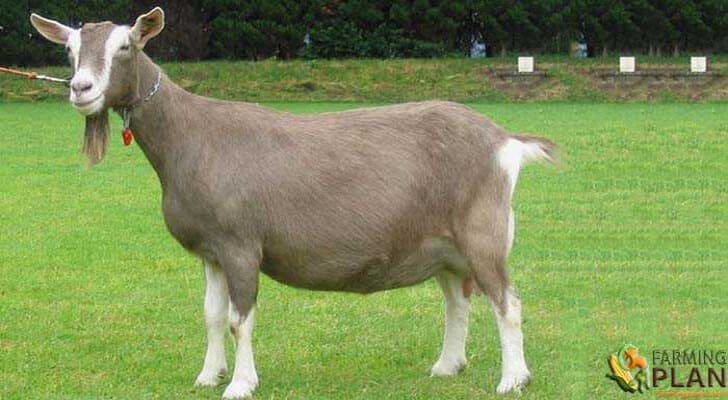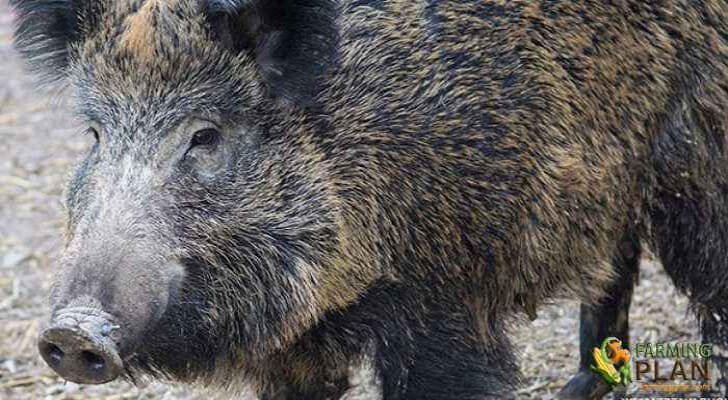The Marwari goat originated from the place where it comes from which is Marwari. It resembles black sheep but this one has a better production of wool. In the year 1970, a census was carried out. There was a total of 4.300.000 individuals of this species. By the end of this decade, they already had 5.000.000. It can be achieved in several areas of India among them is Jodhpur, Jalore, Pali, Barmer, Jaisalmer, Bikaner and Nagaur.
The Marwari goat is a breed native to the Indian region of Rajasthan. This medium-sized animal is primarily black in color and has a lustrous coat. Marwari goats are well adapted to the harsh environment of the Thar desert, which they call home – their native tract includes Barmer, Jaisalmer, Bikaner, Jalore and Nagaur. Marwaris are dual-purpose animals; reared for both milk and meat production (though they don’t produce much milk).

Characteristics of Marwari Goat
The Marwari goat produces individual births during the year, only 10% of births include multiple births, this percentage increases when the goats are well fed, with daily supplements and grazing conditions. The ears are small and flat, they can measure between 16 and 17 cm, and they have a certain fall.
They have thick hair that makes them able to withstand the extreme climates of heat in the desert, and by that same physical condition can also withstand very cold climates. The male of this species has a thick beard, just as the female of this species also has a beard. The coat of this species is bright and its tail is short and thin.
In the same way, this breed is very resistant to diseases and comes to resist very strong nutritional circumstances. Both the male and the female of this species have short horns, which go upwards and backward. Those of the male is larger and more resistant than those of the female. Their average weight varies in males ranging from 39 to 42 kg.
The female’s weight is up to 32 kg. Reach a measure of 76 cm. for the male and 68 cm. for the female. Most are born with black fur, although in 5% of cases there are spots of white or brown color on the coat.
Food
The Marwari goat is kept eating herbs and grass. So that the milk production is fruitful to the day the goats have to be fed with nutrients, nevertheless, for being a resistant race, being in minimum conditions of equal feeding can produce milk.
Usage
The Marwari goat is used for a dual purpose, as milk production, and for its meat. They produce between 2 and 3 kg of milk per day when they are well fed and 0.5 to 1 kg of milk daily when fed under grazing conditions. They produce milk for 106 to 200 days in the year, and the total production reaches 98 kg. Besides that its hair is used for the elaboration of different materials, the wool that is taken of this species although it is thick is considered of good quality.
Special Feature
The Marwari goat is resistant to warm climates, so much so that they can withstand the harsh conditions of the Thar desert. In India, there are around 7,500,000 individuals of this species according to a census carried out in 2007.
This breed produces coarse wool too rough for garments but suitable for carpets, bags, and harnesses that are placed on camels. And they get to produce 3 kg of wool a year. They cross the jamnapari species to increase the gene for milk production.
Goat Profile
| Goat name | Marwari Goat |
| Other Name | Any |
| Goat Purpose | Producer of milk, meat, and elaboration of fabric with its wool. |
| Coat color | Black, sometimes have white or brown spots |
| Weight | 32 to 42 Kg |
| Climate Tolerance | All climates |
| Country of Origin | India |
FAQ
Which goat is most in Rajasthan?
The Marwari goat is the most popular breed of goat found in Rajasthan, India. This breed is well-known for its unique coloration, which includes a variety of shades from white to black, with many variations in between. They are also known for their hardiness and ability to survive harsh climates. Marwari goats are primarily used for meat production, but they can also produce high-quality milk and wool.
Which is the finest goat breed?
The finest goat breed depends on the purpose for which you are raising the goats. If you are looking to produce milk, then a dairy breed such as the Saanen or Alpine is a great choice. These goats produce high volumes of milk and have good temperaments. If you are looking for a meat breed, then the Boer goat is an excellent option. Boer goats are known for their fast growth rate and high-quality meat.
Which is the Indian famous goat?
The Indian famous goat is the Jamunapari breed. This breed is native to India and is known for its large size, long ears, and white coat with patches of brown or black. They are also known for their hardiness and adaptability, making them ideal for both dairy production and meat production. Jamunapari goats are considered to be one of the best breeds for milk production in India, with a lactation period of up to nine months. They produce an average of two liters per day, which can be used for drinking or processed into cheese, butter, or yogurt.
Conclusion
The Marwari goat is a medium-sized animal, predominantly black in color. The hair covering is lustrous and the tail is small and thin. The udders are fairly well developed but small and round with small teats placed laterally. This breed has been adapted to survive in harsh desert conditions so it can be reared for both mutton as well as milk production purposes. If you’re looking at stocking up on this dual-purpose breed of goats then head over to your nearest seller who deals in livestock or contact us now! We’ll help you find the right breeder that suits your needs best!
As A Reference: Farming


